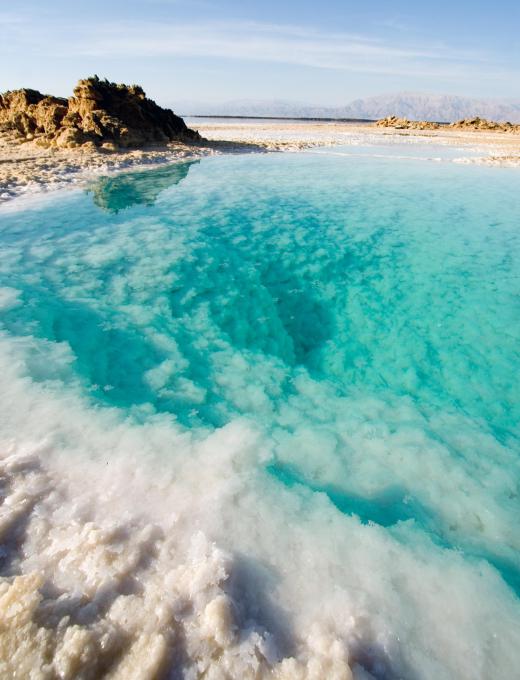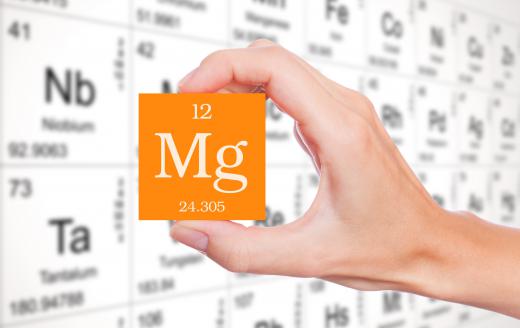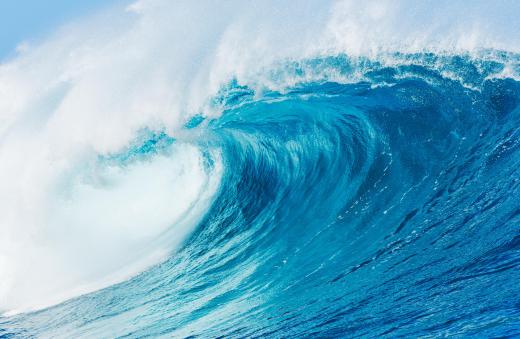Can Magnesium be Extracted from Seawater?
 Mary McMahon
Mary McMahon
Magnesium is an abundant and vitally useful element which has numerous industrial applications in addition to being important to human health. It is the third most common dissolved mineral in seawater, and many sources of magnesium are actually mineral deposits left behind by oceans. Magnesium is also extracted from highly concentrated brine wells, and, yes, it is also possible to extract magnesium from seawater. Brine wells can be found in numerous places all over the world, and they have been used historically as a source of salt as well as magnesium.
Many manufacturers prefer to treat brine to extract magnesium, since brine has a high concentration of dissolved minerals, including magnesium. The required to extract magnesium from seawater is actually identical, although it requires the processing of a high volume of seawater for the same end amount of magnesium. Since magnesium is extremely useful, the process is worth the cost to some companies. During the Second World War especially, when magnesium was highly sought after, several companies established facilities to extract magnesium from seawater.

To start the extraction process, a company mixes the seawater with its suspended salts, including magnesium hydroxide, with calcium oxide, also called lime, to make a slurry. The slurry is allowed to sit so that the solids settle to the bottom and the water rises to the top, and then the solids are removed, filtered, and washed to remove residual chlorides. The end result is a loosely packed “cake” of material which is calcined in a kiln to leave magnesium behind.

Depending on the precise compound desired, other ingredients such as sulfuric acid may be mixed with the slurry to generate a different end product. Since a variety of magnesium compounds are used in industrial processes, these unique treatments can create a range of targeted products. The substance may also be turned back into magnesium hydroxide in the case of milk of magnesia, a solution of magnesium in water which is used to treat an assortment of intestinal complaints.

Companies which extract magnesium from seawater rely on very large processing plants which are capable of handling high volumes of seawater. Since the dissolved salts in seawater only make up around 3.5 percent of the total volume, as opposed to brine, which has dissolved salts in concentrations upwards of 50%, a very large amount of seawater must be processed to make seawater production comparable to brine wells.
AS FEATURED ON:
AS FEATURED ON:













Discussion Comments
i am doing an assignment on magnesium protons from the sea. I need to know if it would be better for the environment if man stopped producing magnesium?
how do you produce magnesium hydroxide industrially?
Hi!
I am new on this forum. Need help on below problem.
Is production of Magnesium from sea water in decline? What are the other sources of getting Magnesium? Dolomite is a source of Magnesium, but how the metal can be separated?
I need to know the technology for "Magnesium from Dolomite" as I am preparing a blue print for waste utilization for Dolomitic Marble Processing Slurry.
Is the international Magnesium price on the rise since couple of years because of supply crunch due to sea water plants closing down their production?
Solenoid
Post your comments